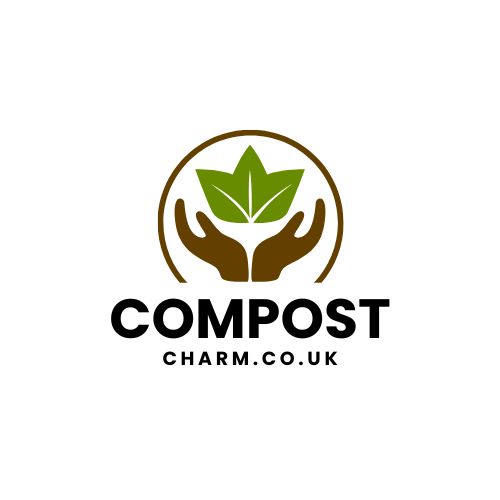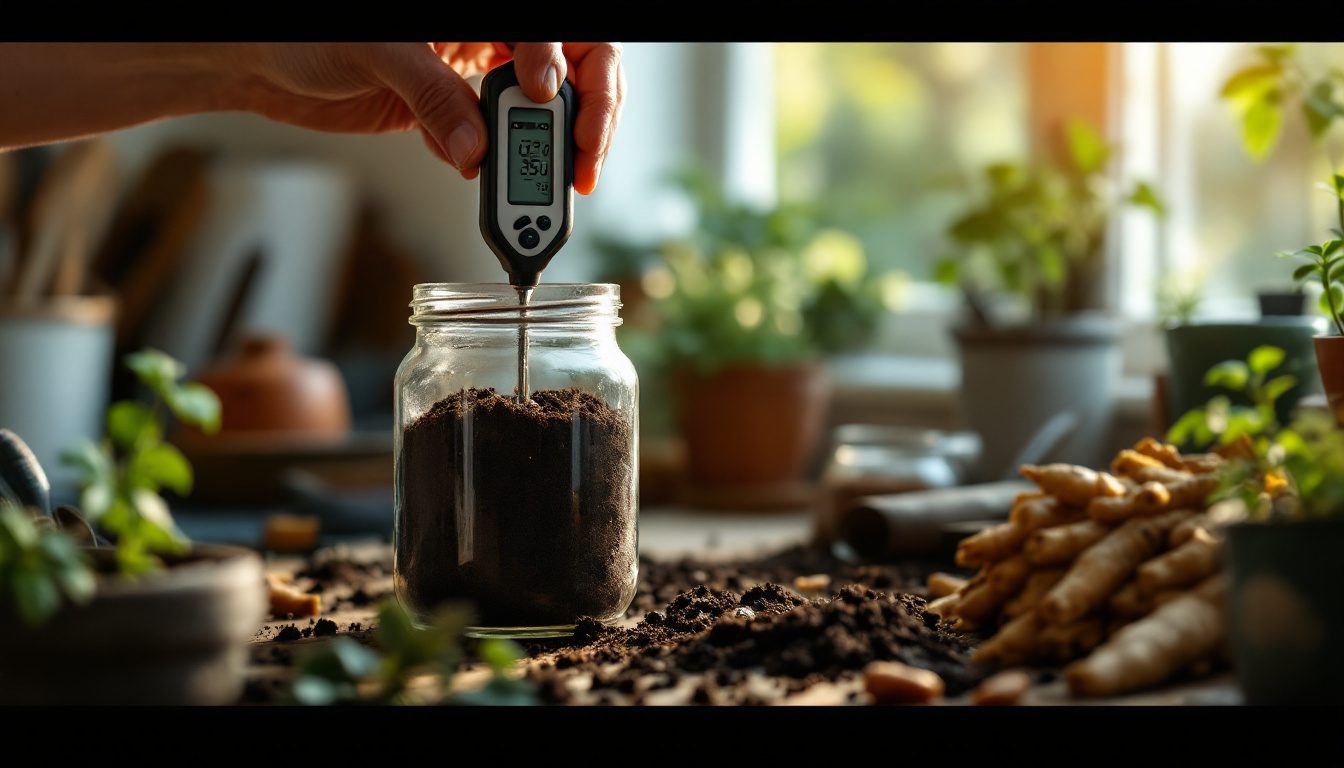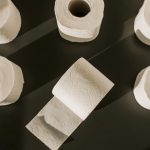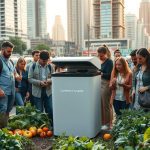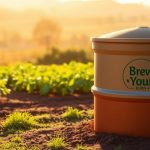Simple Steps for the Best Results
Learn how to test compost quality at home using simple tips. Check for texture, smell, and color so your garden soil gets just what it needs.
Key Takeaways:
- Composting turns food scraps, garden waste, and more into rich soil that helps plants and the planet.
- High-quality compost is dark, crumbly, earthy-smelling, and has balanced moisture.
- Easy tests like the squeeze test, color check, and pH check help spot top-notch compost.
- Common issues like too much moisture or odd smells can be fixed with basic steps.
- Getting compost right supports healthy gardens and a greener environment.
If you’ve ever wondered how to test compost quality, you’re not alone.
Composting is a fun, science-backed way to turn scraps and yard waste into something amazing for your garden.
Quality compost helps your plants grow strong, keeps food waste out of landfills, and supports a cleaner planet.
With just a few simple checks, you can tell if your compost pile—whether in a classic heap, a neat compost tumbler, or through worm power with vermicomposting—is ready for action.
Understanding Composting and Why Quality Matters
Composting means letting nature do its thing. Microbes, worms, and even helpful bugs break down food peelings, grass clippings, dead leaves, and more.
You end up with compost: a dark, crumbly, soil-like mix packed with nutrients.
There are lots of ways to compost, such as using a compost tumbler or even trying vermicomposting (that’s using worms to speed things up).
Great compost matters because it feeds your soil. Healthy compost holds water, keeps roots happy, and cuts down the need for chemical fertilizers.
It’s good for your garden and the world around you.
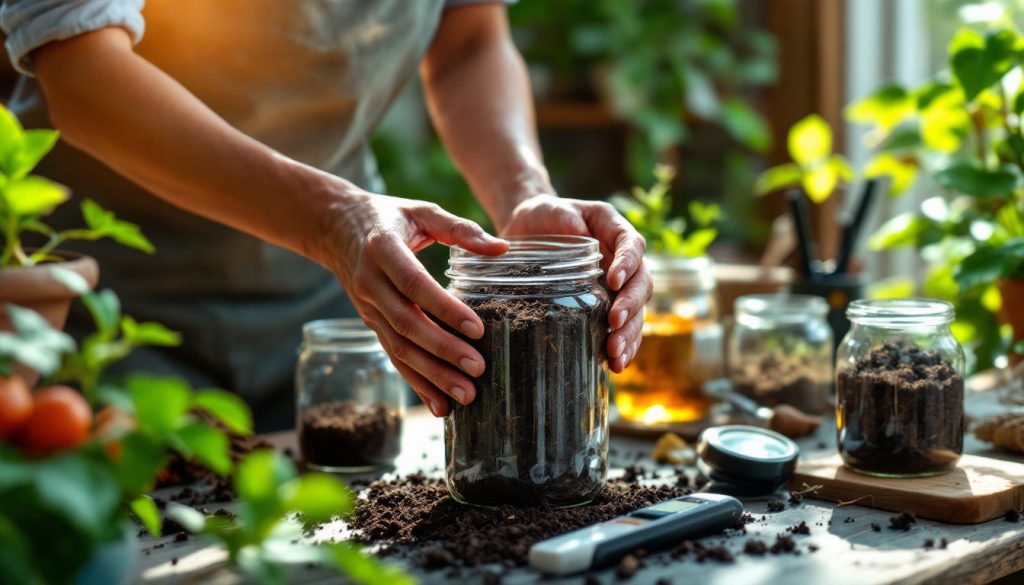
Step-by-Step Guide: How to Test Compost Quality at Home
Checking compost quality doesn’t need fancy tools. Just trust your senses.
Visual and Texture Clues: What Healthy Compost Looks Like
Good compost should be rich brown or black, a bit like chocolate cake crumbs. It’s soft, loose, and you shouldn’t see old banana peels or big chunks.
If it looks like healthy soil, smells earthy, and feels like potting mix, you’re on the right track.
The Squeeze Test: Checking Moisture Content
To check the moisture, grab a small handful and give it a gentle squeeze. If a few drops of water come out, the moisture is just right.
If it feels dry or falls apart, add a little water or more green scraps. If your hand drips, add dry leaves or torn cardboard.
For more details on adjusting your compost for perfect moisture, check out these Jamieson Brothers seed compost tips.
The Nose Knows: Smell and Odor Testing
Give your compost a sniff. Finished compost should smell fresh and earthy, never sharp or rotten. Bad smells mean something’s off—usually too many wet scraps or not enough air.
Bury smelly scraps, mix the pile, and add some dry material like straw or paper.
Testing pH and Simple Home Science Tricks
Most compost works best when it’s close to neutral pH (think pH 6–8). Use a basic test kit from the garden center or try home methods, like a sprinkle of baking soda.
Learning about the effect of baking soda on compost can help keep things balanced. Compost that’s too acidic or alkaline slows down the good stuff.
Check for Additives
Sometimes people add extras to speed up compost. Be smart with these.
Learn more about what’s safe and what’s not in the Compost additives guide.
Common Problems (And Simple Fixes) When Testing Compost
Compost isn’t always perfect, but small tweaks make a big difference.
What if My Compost is Too Wet or Too Dry?
Too wet? Add newspaper, dry leaves, or sawdust. Keep the lid off your compost tumbler during dry weather to air things out. Too dry?
Sprinkle water and mix in fresh green weeds or veggie scraps.
If Compost Smells Bad or Looks Wrong
If your compost is sludgy or smells sour, you might have too many “greens” (wet, fresh stuff) and not enough “browns” (dry, papery things).
Mix it and add more dry bits.
Troubleshooting Slow Compost or Unfinished Material
If things break down slowly, make sure the pile is mixed well and has enough air. A compost tumbler can help speed up the process.
For extra help, give # How to Test Compost Quality at Home [Easy, Reliable Steps].
Wondering how to test compost quality without a science degree or fancy tools? You’re in the right place.
The best compost—whether made in a pile, compost tumbler, or with help from worms in vermicomposting—should look like rich, crumbly soil, smell earthy, and feel a bit like a wrung-out sponge.
If it checks these boxes, it’s ready to feed your garden.
Composting isn’t just a weekend project. It’s a clever and natural way to recycle kitchen scraps and garden waste into something that makes plants perk up and flowers bloom.
Good compost keeps your soil healthy, conserves water, and cuts down on the need for chemical fertilizers.
Plus, testing compost at home is simple enough for anyone to master, even beginners—no need to overthink it.
A few easy checks, like squeezing a handful or giving it a good sniff, can show if your compost is finished and safe for your plants.
These tricks work with all methods, from classic bins to speedy compost tumblers and even worm-powered bins.
Composting helps your garden and the planet, and you don’t need a huge yard to get started.
For those with limited space, check out this helpful resource on composting in a small backyard for more ideas.
Understanding Composting and Compost Quality
Composting is more than just tossing old vegetable peels and grass cuttings into a pile. It’s how nature recycles, turning everyday scraps into nutrient-rich food for your plants.
When you understand composting, it’s easy to see why the quality of your finished compost is so important.
Good compost gives your garden the boost it needs, whether you’re working with a traditional heap, a compost tumbler, or getting help from wriggly friends with vermicomposting.
What Is Composting and Why Does It Matter?
At its core, composting is the natural process of breaking down organic stuff—like food waste, fallen leaves, and paper—by bacteria, fungi, worms, and little bugs.
Together, they turn your kitchen and yard scraps into dark, crumbly compost that acts as a supercharged soil booster.
Healthy compost isn’t just about getting rid of rubbish. It’s about giving back to your garden and the planet. When you compost, you:
- Reduce landfill waste: Less ends up in the bin, which is better for the earth.
- Feed your soil: Compost is packed with nutrients that help plants grow strong.
- Cut down on chemical fertilizers: Save money and keep your garden healthy, naturally.
- Support a healthier climate: Composting helps reduce harmful greenhouse gas emissions compared to sending scraps to landfill.
Want even more reasons? This Composting 101 guide offers an excellent overview of how composting helps at home and beyond.
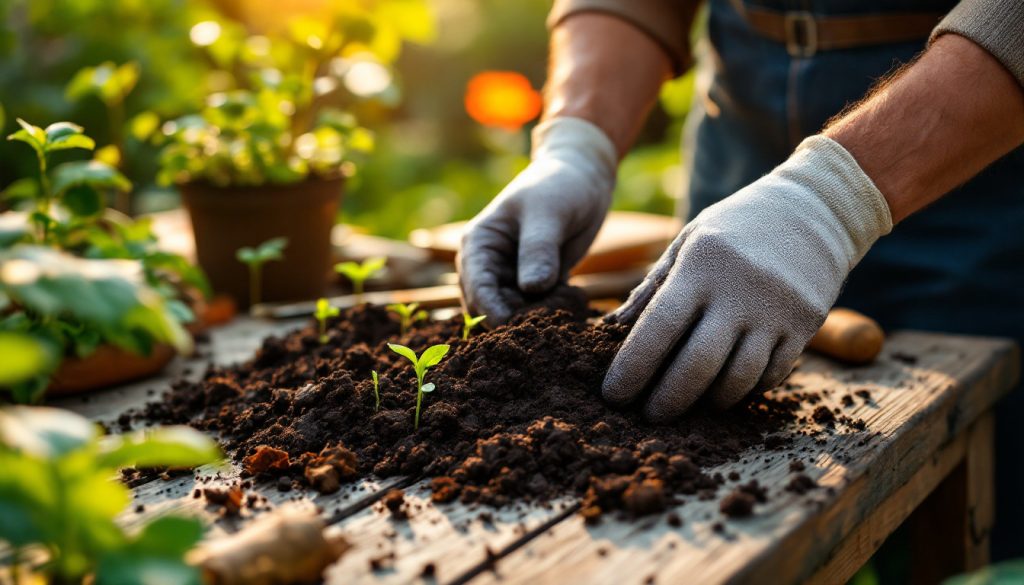
What Is Good Compost Quality?
If you’re eager to know how to test compost quality, start by understanding what makes compost “good.” Top-quality compost is:
- Dark, crumbly, and moist, not soggy or dry.
- Earthy-smelling, kind of like a forest floor after rain—never sour or rotten.
- Evenly broken down—no big lumps, tough stems, or obvious food scraps left.
This is true whether your compost comes from a backyard pile, a nifty compost tumbler, or a bin full of happy worms through vermicomposting.
Good compost doesn’t just look or smell right—it performs well. It holds moisture, releases nutrients slowly, and blends smoothly into garden beds or pots.
For even more ways to spot great compost, the Compost analysis guide from MU Extension has simple pointers.
How Composting Methods Affect Quality
Not all compost is created equal. The composting method you use can affect how fast your pile breaks down and what the final product looks like:
- Traditional compost piles need a balance of greens (fresh scraps) and browns (dried stuff).
- Compost tumblers make turning and mixing easier, which adds air and boosts breakdown.
- Vermicomposting uses red wiggler worms to munch through veggie scraps, speeding things up and leaving behind rich, worm-cast “black gold.”
Each method can give you awesome results if you monitor the key signs of quality—color, texture, smell, and a nice, crumbly finish.
If you’re new to any of these methods, check out these 6 composting methods you can try at home to find one that fits your lifestyle.
What Factors Influence Compost Quality?
For your compost to turn out just right, a few basics need attention:
- Ingredient mix: Too many greens can cause odor, while too many browns slow breakdown.
- Air and moisture: Compost needs air (oxygen) and the right level of moisture, like a wrung-out sponge.
- Size and turning: Cutting up materials speeds things up, and mixing piles or rotating a compost tumbler ensures everything breaks down evenly.
- Temperature: Warm piles break down faster, especially in the center.
Missing the mark on any of these? Don’t worry. Most issues are easy to fix, and every batch of compost gets better as you learn.
If you want season-by-season composting wisdom, these Composting Calendar Tips can help.
Quick Key Takeaways
Here are the main points you should remember:
- Composting recycles kitchen and yard scraps into rich plant food.
- Quality compost is dark, crumbly, and earthy-smelling—never slimy or still full of scraps.
- Different methods (traditional pile, compost tumbler, vermicomposting) all make great compost if basic needs are met.
- A good balance of greens and browns, plus air and the right moisture, is the secret.
- Testing compost quality means trusting your senses: look, feel, and smell.
Curious about composting basics, or want instant advice on improving your pile? Pop a question to the Composting FAQ Bot or start with tips in the Starting Composting at Home guide.
For more in-depth info on the science behind composting, take a look at the US EPA’s composting resource.
Step-by-Step Guide: How to Test Compost Quality at Home
Testing compost quality at home is easy and satisfying. No fancy equipment is needed—just use your senses and a few hands-on tricks.
Whether your compost comes from a classic pile, a modern compost tumbler, or a hardworking vermicomposting bin, these steps make it clear when your homemade compost is ready to help your garden thrive.
Visual and Texture Clues: What Healthy Compost Looks Like
 Photo by Kaboompics.com
Photo by Kaboompics.com
Take a handful of finished compost and look closely. Here’s what to spot:
- Color: Good compost should be dark brown or black, similar to potting soil or the color of rich chocolate cake.
- Texture: It should feel crumbly and loose, never slimy or sticky. Imagine moist brownies that break apart easily in your hands. No big chunks of eggshells, fruit peels, or twigs should be visible.
- Scrap-Free: Healthy compost blends together. If you’re still spotting banana peels or onion skins, give it more time. All the old scraps should vanish, leaving only an earthy “dirt” look.
These simple clues help you spot when compost is ready for garden beds, containers, or even your favorite houseplants.
The Squeeze Test: Checking Moisture Content
A good moisture level is key for healthy compost. To check this, try the squeeze test:
- Take a handful of compost.
- Squeeze it gently.
- If a couple of drops of water come out, it’s perfect—like a wrung-out sponge.
- If it crumbles and stays dry, add water or mix in some fresh green scraps.
- If water streams out, it’s too wet—add dry leaves, straw, or torn cardboard to soak up the extra moisture.
For more expert moisture tips, you can follow the advice found in the Jamieson Brothers seed compost guide.
If you’re using a compost tumbler, check moisture more often—turning the bin helps mix in air and speed up drying. Finding that balance makes all the difference.
The Nose Knows: Smell and Odor Testing
Trust your nose! Healthy compost should smell earthy, like a walk in the woods after rain. Strong or sour odors mean a fix is needed:
- Good: An “earthy” or forest-floor smell—fresh and mild.
- Bad: Rotten egg, sour milk, or strong ammonia scents—these are red flags.
What causes bad smells?
- Too much moisture or green matter can trigger bad odor.
- Not enough air (oxygen) slows decomposition and turns compost slimy.
Quick fixes:
- Mix in more dry, brown materials like shredded paper or leaves.
- Turn the pile to add air—using a compost tumbler or fork works great.
- Bury smelly scraps deeper in the pile to decrease odor on top.
Checking the smell is a quick test for anyone learning how to test compost quality, especially if you’re new to composting or vermicomposting.
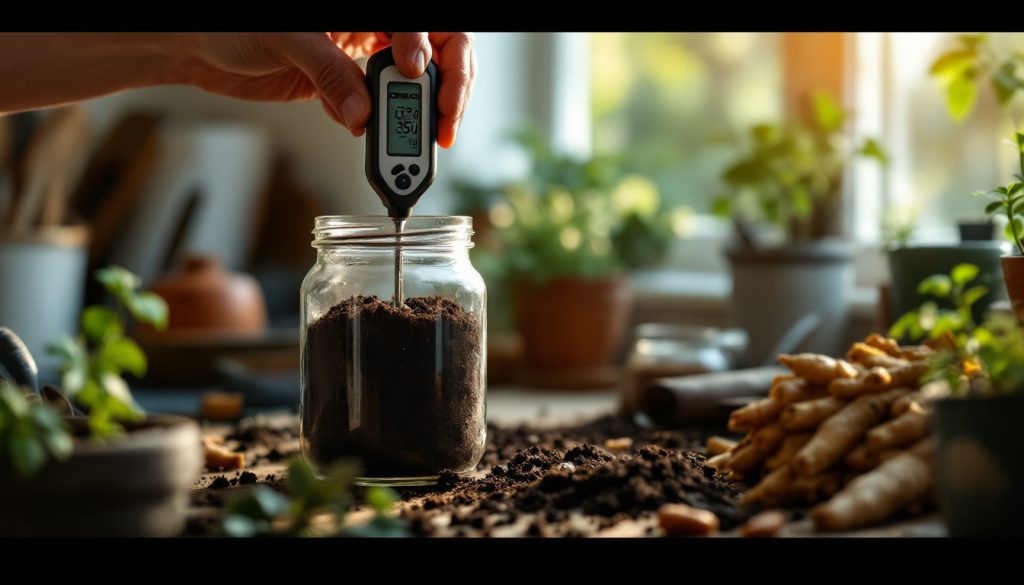
Testing pH and Simple Home Science Tricks
pH in compost matters because it affects how plants take up nutrients. Most finished compost is near neutral (pH 6-8). Here’s how to check it without a lab:
Using a pH test kit:
- Buy a simple soil pH kit at a garden center.
- Follow the instructions—usually, you mix compost with water and dip in the test strip.
Homemade Science:
- For a basic test, sprinkle baking soda on moist compost. If it fizzes, the compost is likely acidic.
- For a fun science trick that doubles as a pH clue, learn about how baking soda works in compost.
For step-by-step tips, visit this guide on how to test compost pH. Testing helps you catch problems early, ensuring healthy, happy plants.
Key Takeaways
- Finished compost is dark, crumbly, free of scraps, and smells earthy.
- Squeeze test and sniff checks are quick ways to test compost quality at home.
- Proper moisture and pH make compost safe for your garden.
- Anyone can test compost, whether using a pile, compost tumbler, or through vermicomposting.
- For troubleshooting specific issues, instant answers are available from the Composting FAQ Bot.
Keeping these simple steps in mind makes composting less of a mystery and more of a joy. Your plants—and the planet—will thank you.
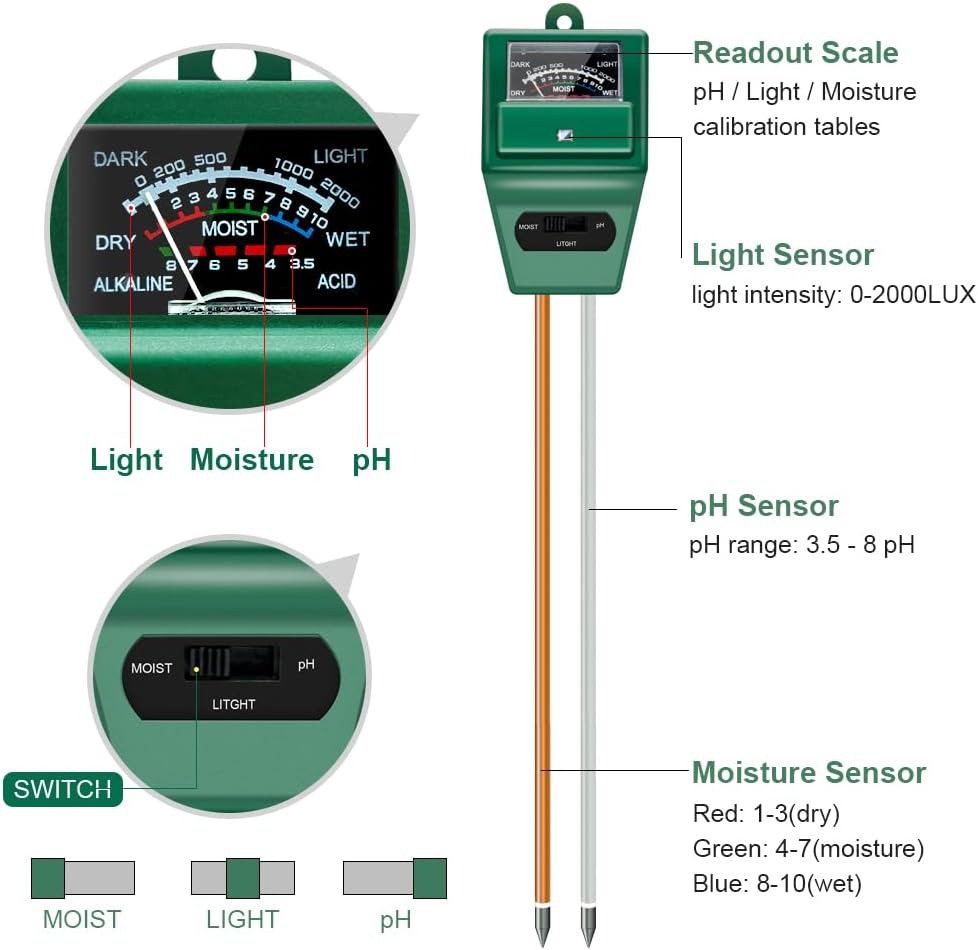
Common Problems (And Simple Solutions) When Testing Compost
Testing compost can sometimes reveal little surprises—like a soggy pile, a stinky batch, or a heap that just won’t break down.
If you’re learning how to test compost quality and run into issues, you’re not alone. Most problems have simple fixes.
Let’s look at why these issues crop up and how you can solve them with easy steps.
What if My Compost is Too Wet or Too Dry?
When compost is too wet, it gets heavy, sticky, and sometimes turns smelly.
When it’s too dry, decomposition slows to a crawl, and nothing seems to happen.
 Photo by Greta Hoffman
Photo by Greta Hoffman
What causes these moisture mishaps?
- Heavy rains are soaking your compost bin or open heap.
- Too many “green” kitchen scraps, which add water.
- Not enough “brown” materials like paper, leaves, or wood chips.
- Forgetting to water (in hot weather, things dry out fast).
- Overly tight covers or poor airflow.
Simple fixes:
- If the pile drips water when squeezed, add more dry browns (shredded newspaper, straw, or leaves). Leave the pile uncovered for a few sunny days if you can.
- If compost feels bone-dry and doesn’t hold its shape, lightly sprinkle water and add more green material (like veggie peels).
- In wet weather, cover your compost heap with a tarp or lid.
- Turn the pile regularly for even moisture.
A compost tumbler is especially handy here—just give it a spin to mix things up or let extra moisture escape.
For more practical tips and a troubleshooting guide to soggy or dry piles, the guide on Diagnosing common backyard composting problems offers step-by-step solutions.
If Compost Smells Bad or Looks Wrong
Bad odors are a sure sign something isn’t working right. Healthy compost should never remind you of garbage or a locker room!
If it smells like rotten eggs, ammonia, or is slimy to the touch, it’s usually linked to a few simple causes.
Common causes:
- Too many wet “greens” compared to dry “browns”.
- Not enough air or turning.
- The pile is packed tight or gets little sun.
- Materials like meat or dairy sneaking into the bin.
- Pile is sitting still for weeks.
How to fix a smelly compost pile:
- Add a generous layer of browns. Dry leaves, chopped straw, or shredded cardboard can soak up the stink.
- Fluff or turn the pile to add air and break up clumps. If you use a compost tumbler, rotate it a few extra times.
- Avoid adding troublesome scraps such as meat or greasy leftovers.
- If the compost is soggy, spread it in a thin layer (if space allows) to dry out.
You can get more tips from this guide to fixing smelly compost, which covers the most common causes and cures.
For backyard composters with lots of wet food scraps, mixing and balancing is key. If you’re curious about simple layering techniques, Compost Charm’s advice on the composting calendar also helps.
Troubleshooting Slow Compost or Unfinished Material
If your compost isn’t breaking down or still looks like last week’s veggie scraps after months, don’t lose hope.
Compost sometimes just needs a nudge to pick up speed.
Typical reasons for slow compost:
- Pieces are too large—whole branches or chunky scraps take longer to break down.
- Pile is dry, cold, or short on microbes (the tiny workers in your bin).
- Not enough air or the pile hasn’t been turned.
- Too few “green” materials (not enough nitrogen).
- Pile is too small. Compost works faster when there’s enough mass to retain warmth.
How to speed things up:
- Break up larger materials. Shred twigs, chop up food scraps, and crush eggshells.
- Turn and mix the pile often, or roll your compost tumbler every few days.
- Check the balance of green and brown materials. Even out the mix if it looks off.
- Add water if too dry, or browns if too wet.
- Try vermicomposting if you want faster results—worms are nature’s little composting machines, speeding things along and making nutrient-rich castings.
Tips for faster results can be found in this easy compost speed-up guide, which shares extra tricks like controlling temperature or using more “greens.” If you want more methods beyond the basics, explore various composting solutions available at Compost Charm.
Key Takeaways:
- Moisture matters. Mix wet and dry ingredients and cover as needed.
- Bad smells mean bad balance. Add browns and turn the pile.
- Slow compost perks up with a little attention. Chop stuff smaller, mix often, or try vermicomposting.
- Compost tumblers and worms can make composting easier and faster.
If you ever get stuck or want to double-check your steps, instant help is available through the Composting FAQ Bot, which has quick answers for all your composting and troubleshooting questions.
Compost Quality Testing: Key Takeaways and Next Steps
Testing compost quality wraps up all your hard work, turning those kitchen scraps and garden clippings into the dark, crumbly treasure your plants crave.
It’s not just about curiosity—knowing how to test compost quality helps you build a more productive garden, reduces problems, and gives you confidence whether you’re filling a compost tumbler or letting worms do the heavy lifting with vermicomposting.
The Most Telling Signs: What Finished Compost Looks Like
Finished compost has a few stand-out features:
- It’s dark brown or black and crumbly, a bit like chocolate cake or rich soil.
- Most original scraps vanish, leaving behind a blend that’s free from obvious food waste.
- The smell is earthy, never sour or sharp.
If your compost checks these boxes, you’re likely ready to use it in garden beds or pots.
Easy In-Home Compost Tests
If you want to take your compost quality check to the next level, try these hands-on home tests.
The Plant Growth Test
Plant seeds in a pot filled with your finished compost. Fast-growing seeds like radish or beans work best.
Good compost will let most seeds sprout, showing it’s ready to nourish plants. If few seeds grow or the seedlings look weak, your compost might need more time to mature.
This simple test is used by experts and explained well in this Compost Maturity Test guide.
Temperature Check for Activity
Use a compost thermometer if you have one, or press your hand into the pile’s center. Mature compost should feel close to air temperature, not hot.
If it’s still generating heat, microbes are working, and your compost is still breaking down.
 Photo by Dino
Photo by Dino
Seedling Sensitivity
If you want a quick peek into how “gentle” your compost is, beans and peas are perfect test seeds. These plants react to any lingering toxins or unfinished decomposition.
If they thrive, your compost is ready for the garden. If not, let it sit (or “cure”) a while longer.
Document What Works for Your Composting Setup
No two compost piles break down at exactly the same rate, so it’s smart to keep notes. Write down:
- When you started the pile or batch in your compost tumbler.
- How often you turn, water, or feed your compost or vermicomposting bin.
- The weather and mix of greens and browns you use.
Tracking these helps you spot what speeds things up or slows things down. With each batch, you get a little better and can troubleshoot problems even faster.
If you want tips for timing your composting tasks, see Compost Charm’s composting calendar.
Why Compost Quality Matters for Your Garden
Gardeners who test their compost enjoy:
- Healthier plants and bigger blooms.
- Fewer pest and disease problems.
- Less risk of “burning” plants with strong or unfinished compost.
When compost is well-finished, it works with every composting method—from classic bins to efficient compost tumblers and even the speedy process of vermicomposting.
Key Takeaways from Compost Quality Testing
After running your hands, nose, and maybe a thermometer or a bean seed test through your pile, you’ll quickly see the value of checking compost quality:
- Look, smell, and touch tell you most of what you need to know.
- Tests like the plant and temperature checks help confirm compost maturity.
- Strong compost supports healthy, resilient gardens—while unfinished compost can cause problems.
- Every batch teaches you more about your composting setup, whether it’s traditional, in a compost tumbler, or through vermicomposting.
- For even more advice on figuring out finished compost (and clever ways to get started), browse the Starting Composting at Home guide.
Getting familiar with these testing methods gives you the confidence to use your homemade compost everywhere—knowing it’ll feed your soil, boost your plants, and help you live more sustainably.
Frequently Asked Questions: How to Test Compost Quality
Curious about the little details that make compost testing a breeze? You’re not the only one! Even experienced composters sometimes need a gentle reminder or a clever trick for checking their latest batch.
Below are the most common questions people have when it comes to how to test compost quality, all answered in a simple, no-nonsense way.
How Can I Tell If My Compost Is Ready to Use?
The quickest way is to use your senses! Scoop up a handful and check for these signs:
- Look: Finished compost is dark brown or black, crumbly, and free from visible food scraps.
- Touch: It feels loose and breaks apart easily—think moist, chocolate cake, not mud.
- Smell: Good compost should have a fresh, earthy scent, never sour or like rotten eggs.
- Moisture: A squeeze test should yield just a drop or two of water.
If you’d like to get more specific, try the home plant test by planting fast-growing seeds like radishes in your compost. If most sprout and look healthy, your compost is garden-ready. For a detailed step-by-step plant test, see this Compost Maturity Test.
Do I Have to Test Compost from Every Method (Pile, Tumbler, or Worm Bin)?
Yes—no matter if you’re using a compost tumbler, standard heap, or vermicomposting with worms, the simple checks apply to all.
Each method creates compost in its own way, but the clues of ready, mature compost stay the same: crumbly texture, earthy smell, and no big scraps.
For anyone new to different styles, explore 6 Effective Composting Methods for plenty of handy tips.
Can Unfinished Compost Hurt My Plants?
Unfinished compost can sometimes cause problems in your garden. Fresh scraps or compost that’s still heating up may contain acids or toxins that stress young plants. Seedlings are especially sensitive.
If you’re unsure, test with bean or pea seeds—they’re quick to show if something’s wrong. Want to know exactly how to try a seed test?
Here’s advice from gardeners who use bean and pea seed tests for compost quality.
Is There a Simple Way to Test Compost Without Any Tools?
Absolutely. You’ll just need your hands, your nose, and maybe a few seeds.
- Scoop compost and squeeze a handful: should feel like a wrung-out sponge.
- Give it a good sniff: earthy is perfect, sour isn’t.
- Take a close look: if you spot lots of unbroken banana peels or twigs, wait a little longer.
Science kits and pH tests can help, but for most gardeners, your senses do the job just fine.
What If My Compost Looks Fine but Smells Bad?
A funky smell is a common complaint. Usually, this means you need more “browns” (dry materials) or more air in the pile. Give your compost a good mix using a shovel or by rolling your compost tumbler.
Adding dry leaves or torn cardboard often fixes odor quickly. If you run into stubborn issues, don’t stress—ask for help with resources like the Composting FAQ Bot.
How Often Should I Test My Compost?
There are no rules carved in stone! Most people check their compost every couple of weeks. If you use a compost tumbler or actively turn your pile, you might check a bit more often to see the happy changes.
If your compost is slow to break down, check for dry or wet spots, or if it gets a weird smell, test right away.
What If I Want to Be Extra Sure About Compost Safety?
If you’d like an expert-grade test, send a sample to a local extension service or garden lab. They’ll check for nutrient content, pH, and any lingering problems.
You can find out more about professional testing in this compost analysis guide.
Key Takeaways from This Section
- Anyone can learn how to test compost quality using simple tools like eyes, hands, and nose.
- Finished compost is dark, crumbly, and smells earthy. Unfinished compost usually looks chunky, wet, or feels hot inside.
- You don’t need fancy gadgets—just basic checks, or a homemade seedling test for extra peace of mind.
- Compost quality matters for plant safety and success, so don’t skip the quick tests.
- If you get stuck, jump over to Compost Charm’s Starting Composting at Home guide for beginner-friendly troubleshooting.
This friendly FAQ should clear up common questions so you can feel confident, whether you’re new to composting or already turning piles and spinning a compost tumbler like a pro.
 Photo by hans middendorp
Photo by hans middendorp
Conclusion
High-quality compost can make a world of difference in your garden—helping plants grow bigger, stronger, and healthier with less waste.
Testing compost quality is simple, and whether you’re using a compost tumbler, classic pile, or keen on vermicomposting, a quick look, squeeze, and smell give you all the clues you need.
By getting to know how to test compost quality, you build confidence and turn kitchen scraps into garden gold. Regular checks mean fewer surprises and happier results every season.
Composting each batch with care supports not just your plants, but also helps reduce landfill waste and encourages a more sustainable lifestyle.
Stay curious and keep experimenting with your composting routine. Remember, making your own compost puts the power of healthy soil right in your hands.
For more handy tips or to troubleshoot slow batches, you might enjoy reading about how to fix a slow compost tumbler or browse Don’t Toss It Tips to discover surprising items you can compost.
Key Takeaways:
- Testing compost quality is easy and essential for healthy plants.
- Simple checks like color, texture, and smell go a long way.
- Tools like compost tumblers and vermicomposting speed up results.
- Regular testing makes composting more reliable and enjoyable.
- Composting at home saves waste and supports a greener planet.
Keep testing your compost, and celebrate each batch—your plants, your garden, and our planet will all thank you!
